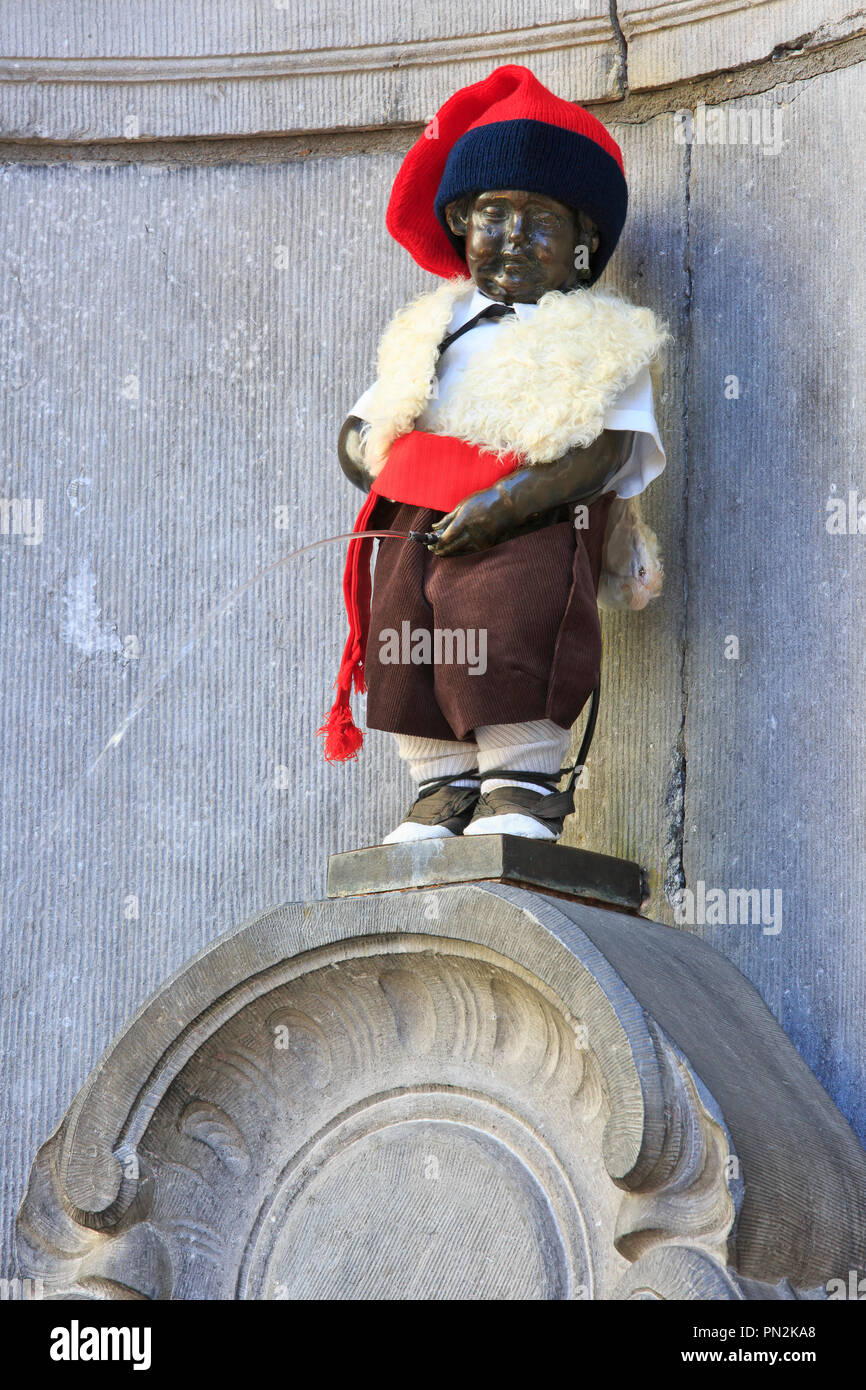Statue of Manneken Pis dressed like a Catalan shepherd (Spanish region) in Brussels, Belgium

Image details
Contributor:
DE ROCKER / Alamy Stock PhotoImage ID:
PN2KA8File size:
63.3 MB (4.1 MB Compressed download)Releases:
Model - no | Property - noDo I need a release?Dimensions:
3840 x 5760 px | 32.5 x 48.8 cm | 12.8 x 19.2 inches | 300dpiDate taken:
11 September 2018Location:
Corner Rue de l'Étuve, Stoofstraat and Rue du Chêne, Eikstraat, Brussels, Belgium, Western EuropeMore information:
In this picture : Manneken Pis dressed like a Catalan shepherd (Spanish region). Manneken Pis is a landmark small bronze sculpture in Brussels, depicting a naked little boy urinating into a fountain's basin. The 61 cm tall bronze statue on the corner of Rue de l'Etuve and Rue des Grands Carmes was made in 1619 by Brussels sculptor Hieronimus Duquesnoy the Elder, father of the more famous François Duquesnoy. The figure has been repeatedly stolen: the current statue dates from 1965. The original restored version is kept at the Maison du Roi/Broodhuis on the Grand Place. There are several legends behind this statue, but the most famous is the one about Duke Godfrey III of Leuven. In 1142, the troops of this two-year-old lord were battling against the troops of the Berthouts, the lords of Grimbergen, in Ransbeke (now Neder-Over-Heembeek). The troops put the infant lord in a basket and hung the basket in a tree to encourage them. From there, the boy urinated on the troops of the Berthouts, who eventually lost the battle. Another legend states that in the 14th century, Brussels was under siege by a foreign power. The city had held its ground for some time, so the attackers conceived of a plan to place explosive charges at the city walls. A little boy named Julianske happened to be spying on them as they were preparing. He urinated on the burning fuse and thus saved the city. There was at the time (middle of the 15th century, perhaps as early as 1388) a similar statue made of stone. The statue was stolen several times. Another story (told often to tourists) tells of a wealthy merchant who, during a visit to the city with his family, had his beloved young son go missing. The merchant hastily formed a search party that scoured all corners of the city until the boy was found happily urinating in a small garden. The merchant, as a gift of gratitude to the locals who helped out during the search, had the fountain built.